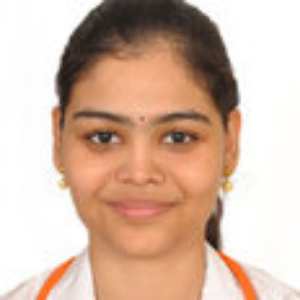Title : A therapeutic study to evaluate the efficacy and adverse effects of cryotherapy combined with intralesional steroids vs combination of intralesional bleomycin and steroids vs fractional carbon dioxide laser in keloids
Abstract:
Background: Keloids are benign fibrotic tissue growths extending beyond trauma margins. Keloids are refractory to treatment and are prone for recurrences. Despite all the different treatment modalities, it has become challenging to find a treatment that delivers optimum results with minimum side effects. We routinely encounter keloids in our OPD, and the present study is undertaken to determine the efficacy of new treatment modalities of keloids. which present a therapeutic challenge due to poor treatment outcomes.
Aims and Objectives: To compare the efficacy and adverse effects of three different treatment modalities for keloids --cryotherapy (Cy) followed by intralesional steroids (ILS), combination of intralesional bleomycin and steroids (ILB+S) and fractional carbondioxide laser (Fr CO2).
Materials and Methods: A total of 90 patients were enrolled. The patients were randomly divided into three groups, A,B and C with each group containing 30 patients. Randomization was done using randomization tables provided by the statistician. Group A patients were treated with Cy followed by intralesional triamcinolone acetonide (TCA); Group B received combination of ILB+S at a concentration of 1mg/ml of bleomycin and 20mg/ml TCA; Group C were treated with Fr Co2 in ablative ultrapulse mode. Treatments were administered at monthly intervals for four months. Response to treatment was assessed using Vancouver scar scale(VSS). The parameters included in the Vancouver scar scale (VSS) are height, pliability, vascularity, pain and itchiness. The patients were followed up every 4 weeks, 12 weeks and 16 weeks and pre and post procedure photographs were taken. At each visit VSS score was calculated and percentage decrease in VSS score from baseline was determined. Comparison of skin thickness assessment before and after treatment was also done by ultrsonography. Final assessment was done after 16 weeks of treatment. Statistical analysis was done using ANOVA test.
Results: Mean percentage of improvement in VSS score post treatment in group A,B,C were 59.82%, 68.77% and 40.3% respectively. Treatment with most efficacy was ILB+S followed by Cy and ILS (P<0.0001). Ultrasonographic assessment also showed significantly superior efficacy of intralsional ILB+S compared to other two treatment groups. Adverse effects in all groups were minimal. Recurrence in the follow up period of six months was least in ILB+S.
Limitations: Small sample size
Conclusion: Combination of intralesional bleomycin and steroids was found to have better efficacy compared to Cryotherapy plus intralesional steroids and Fr. Co2 laser. ILB+S should be considered as a first-line treatment for keloids due to its low cost, easy availability, satisfactory outcome, lower recurrence rate and excellent safety profile. After 8 weeks of treatment, the ILB+S exhibited the quickest response, followed by the Cy+ TAC group and the Fr Co 2 groups.Mechanism of action of bleomcin in keloids – inhibits fibroblast ploliferation, promotes apoptosis and reduces lysyl oxidase levels. Anti- inflammatory properties of steroids aid to prevent the severe inflammation and necrosis triggered by bleomycin. Systemic side effects of bleomycin like pulmonary fibrosis and hepatotoxicity are not seen with the small amount of intralesional drug given. Even the local side effects like hyperpigmentation and ulceration are self- limiting.


